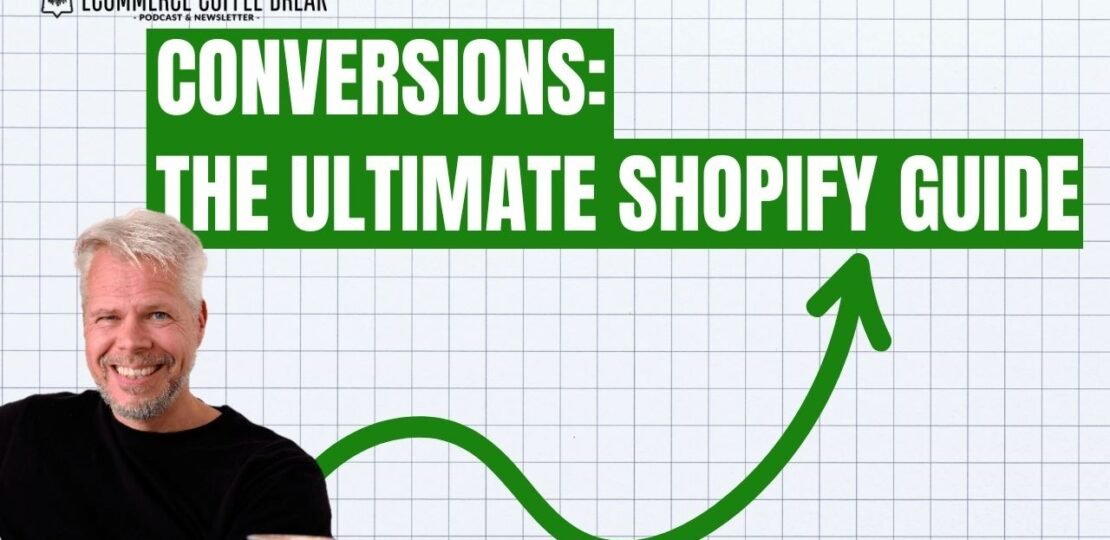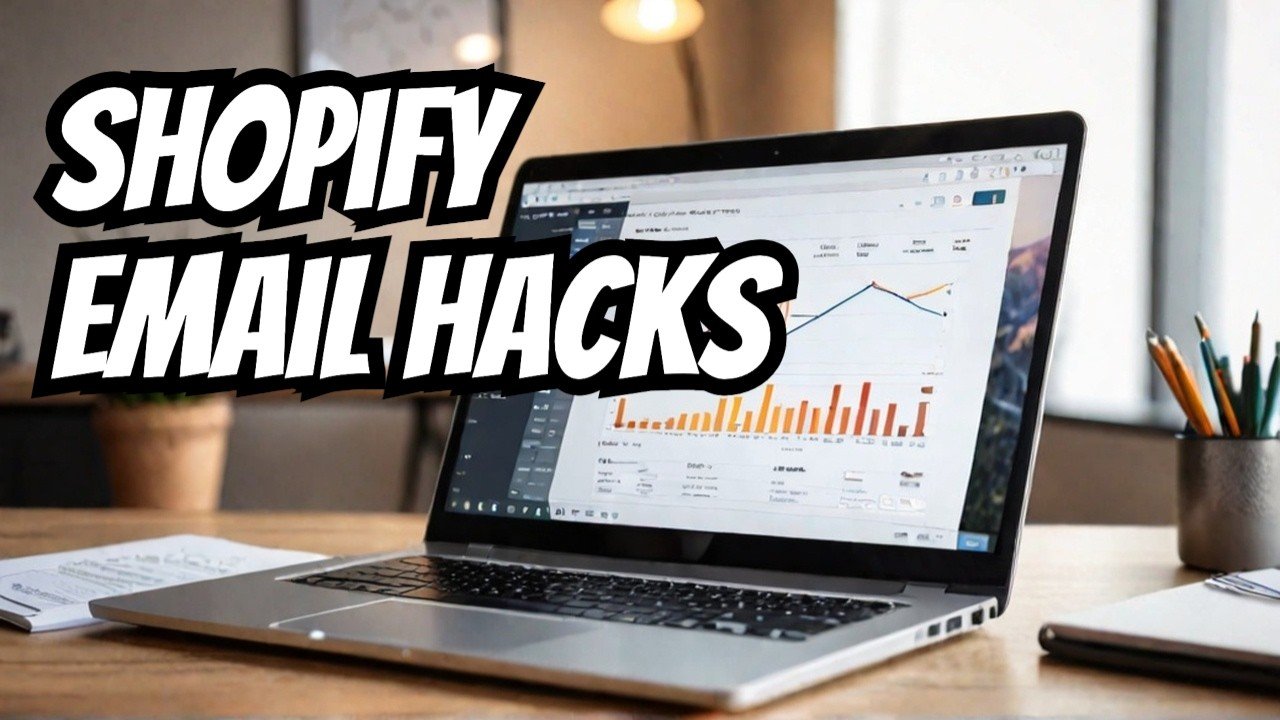
4 Shopify Conversion Rate Optimization Principles You Need to Know
Welcome to the Ecommerce Coffee Break Podcast. In today’s episode, I share four conversion rate optimization principles you need to know to optimize your store for more sales and revenue. So let’s dive right into it.
Hey, it’s Claus here of the Ecommerce Coffee Break Podcast. Today, I’m here with a solo episode, no guest today, and I want to dive into conversion rate optimization. We had a lot of interviews with experts in the field of SEO in the last couple of months, talking about strategies and tactics on how to optimize your store for higher conversions. In this video, I want to dive a little bit more into the principles behind ecommerce conversion rate optimization so that you understand what you need to have in mind or why we actually do conversion rate optimization and what you should look for in a thinking process when you optimize your website.
Generally, picking an ecommerce conversion rate is somewhere between 1 and 4%. That varies a little bit by industry and depending on where your traffic is coming from. Now, most stores might have a conversion rate that is somewhere in the range of 2.something percent. Just imagine you double that, so you bring it to 4% – you basically double your business only by optimizing your conversion rate. So that means you’re not spending more money on paid ads, traffic, or any other marketing activities. You just optimize your website in a way that more people buy from you on your website. If you get it from 1 to 2%, you double your business; from 2 to 4%, you double your business; from 1 to 4%, you quadruple your business. You see, that’s why it is so important to have an optimized store that basically takes the visitor, the potential buyer, step by step through the process and is optimized in a way to provide the right information at the right moment.
Conversion Rate Optimization Principles
There are a few of them, and basically what they do is minimize the visual, motor, cognitive, and memory load.
Minimize Visual Load
When optimizing, you want to minimize the visual load, which pertains to the design of your website. In other words, how much strain are you putting on the user to visually understand your pages? If you have a website or store with tons of moving animations, popups, and slide-ins – any kind of element on your website that blinks, moves, or is a video – then people will have an overload when it comes to what they can visually process. So you want to make sure that your design is very clean and straightforward and focuses on the main elements of what a user should do on the website.
Think about new apps, for instance. You put in a fear of missing out app that pops out somewhere. Ask yourself, does it really help, or is it just distracting from the key elements of your store or your product detail page? Key here is to minimize the visual load. Keep that in mind when you’re picking a design and when you’re adding more design features to your store. This mainly comes from apps and Shopify, like a popup where you ask for an email, a popup for push notifications, and so on. You want to minimize these as much as possible.
Minimize Motor Load
Motor load is about movement. In other words, how much strain are you putting on your user to use the mouse pointer, keyboard, or keypad to get something done? If you have a website where you need to use the mouse or scroll around a lot to get certain things done – like get to the next category, collection page, find the checkout button, or start a video – this is called motoric load. You want to keep this as low as possible. Make sure that the main key elements that people should use are above the fold and close to each other. You want to ensure that they don’t need to use the mouse or their finger, if they’re on a mobile device, too much to get certain things done.
Minimize Cognitive Load
Cognitive load is about the amount of mental processing required to make sense of a page. In other words, how much intellectual burden are you imposing on a visitor just to understand what you’re trying to say? The official version is: if you are using difficult language, specific industry words that the average person does not know or understand, or if you try to make things complicated by the wording – like long blocks of text, long paragraphs, long sentences with more than 10 words, or a complicated image that explains something about your product – this will all increase the cognitive load. People need more processing power to mentally understand what the page is about.
To limit this, write in simple language that your user will understand. A general guideline is to write for an 8th-grade readability level. Unfortunately, readability levels worldwide are relatively low. Also, write in a simple, easy-to-understand language. Try to make your product detail page as easy to understand as possible. Videos usually work well because they explain, but also in the video, don’t use industry terms or complicated language. Try to make it as easy as possible. You, as the website owner and expert in that field, specifically if you’re selling to a specific audience, might be biased in your writing when it comes to copywriting because you know the topic, you know your niche. But always keep in mind that there might be people interested who are far behind you in experience or know-how, and they should still understand what you are offering. Lowering the cognitive load will have a massive impact on your website, broadening your potential audience that will understand what you’re doing, feel understood, and likely buy from you.
Minimize Memory Load
Memory load pertains to the amount of work users have to perform when recollecting something in order to use your site. In other words, how much strain on the user’s memory does it take to use your site? For example, if you have a product detail page and the shipping or return information is somewhere else, and you put a link to your shipping policy page or returns policy page, people have to click that, go over, load the page, read your shipping terms, and then go back to the product detail page. Or worse, they have to find the product detail page again. Basically, they get lost on your website because they have to do something to get the information they were looking for at one point and now need to find the point where they left off. This is difficult; people have to really memorize or remember where they have been and how they got there in the first place. This increases the memory load, and you want to keep this as low as possible. People should not have to memorize anything when they go step by step through your website and get the right information. The key is to provide them with the right information at the right moment.
With my example from before, put the shipping and return information in short words directly on your product detail page – on every product detail page. This way, people do not have to leave the product detail page and still have the information they need. Don’t overload the page. Think about what your user, visitor, or potential customer is thinking about at that moment and what kind of questions they might have, and then try to answer them directly on the product detail page. The same goes for the homepage. On the homepage, you want to have more trust-building elements like logos, awards, qualifications, customer testimonials – all of that. You want to have these on the homepage because that’s where you build up trust, and people want to know more about who you are and if you are a trustworthy store they can trust with their credit card.
Conclusion
So here we have it: the four conversion rate optimization principles – minimize visual, motor, cognitive, and memory load. How do you put these in place? I have put together an eBook with 60 pages which gives you not only an overview of the conversion rate optimization principles but actually goes through page by page of your store, starting with the homepage and going to the collection page, product detail page, cart page, checkout page, and gives you tips, strategies, and proven implementation steps to put this into your store. It’s very straightforward, basically a very long checklist, but also explaining why you do something so that you can work your way through and implement all of these conversion principles in your store. This will lead, if you do this and put everything into place, to a conversion rate optimized Shopify or online store. It works for every platform, not only Shopify. If you’re on WooCommerce, not a problem – it works the same way there.
On top of that, you get more tips on how you can optimize your thank you page, your 404 page, your about us page, and how all of this works with the mobile version of your store. This eBook is now available for $17. The price will go up over time, so if you buy it now, you get it cheaper than it will be in a couple of weeks. It’s an instant download, so just go ahead, click the link in the show notes or description, download it immediately, and start implementing. I recommend doing this before Q4, before the busy season, so that your store is optimized by the time the traffic really hits. If you increase your conversion rate with all of these tips by just 1%, you could probably double your store revenue.
That’s it from my side. I will venture off in a few days to Southeast Asia, still do some interviews, but there will probably be fewer interviews in the next couple of weeks because I will be exploring a few countries, starting with Thailand, and will be on the road for a while. In mid to late October, I will be back in full work mode. I hope I could help you a little bit here with optimizing or understanding conversion rate optimization principles. Dive into the episodes of the Ecommerce Coffee Break Podcast for more episodes with more experts on conversion rate optimization, and you should have all the information you need to get your store optimized to the maximum and get more customers through the door. I hope that helps. I see you in the next video, and have a great day!
Read More: How to make your store rank higher in Google
RELATED POSTS
View all


